Student Union Elections
Production Blog
The first task I completed for the Applied Production Skills module was the Instagram Story task. In this task, we worked as a group to try and create a “healthy living/eating” story. We aimed to achieve a professional one-minute video that could encourage people to eat and live healthily. We encountered problems while shooting footage, as it was difficult to use the tripod to get portrait footage. We overcame this by filming the footage freehand but trying to get steady shots by making sure the “camera is kept rigid” (Patricia Holland 2000). We also tried to disguise the fact that the camera was shaking by using walking shots to make it look like it was done purposely. We also encountered a problem that involved the public, as we were often in people’s way, and vice versa. We then overcame this by trying to get footage in areas of the city that weren’t full with pedestrians, and where we had more space around us that we could use while filming. In this task, I learnt how to work as a team when making a piece that was more creative, as we all had different ideas on what the story should be about, as well as how we should portray the piece.
I also did the SU Elections task for this module, where we worked as a group to interview another student who was running for one of the positions in the upcoming votes. We made sure that we followed the brief given to us, as it was important when filming and editing the interview that the final videos all came out very similar, as this is what the client specified so no one running for any of the roles had an unfair advantage through a better election video. We faced a problem while filming the interviews, as it was often difficult for the interviewee to be relaxed whilst being on camera, as well as wording their answers in the way they would like them to come across, and there is “no guarantee that they can communicate it well in person” (Bamford 2012). We overcame this problem by letting the candidate know what the questions would be in advance, so they had time to think about what they would say. We also filmed the interviews twice, so we could edit the two interviews together to get the best of the two interviews in one edited piece. While doing this piece, I learnt how to follow a strict brief set by the client (the Student Union) in order to make the interview fair. I also learnt how to interview someone that you don’t know in front of a camera in a way that is professional, while also trying to make the interviewee as relaxed as possible.
While doing the audio task for this module, we tried to make the sounds fit as closely to our chosen video as we could to make it seem realistic and seamless. We then recorded the audio by doing the exact same thing as what was shown in the video in order to make the sound effects as convincing as possible. For example, in our chosen clip, there is a young boy running around a field. In order to get footage for this, we went to a field and recorded the sound of running through long grass to make the sound realistic. We encountered problems while recording this footage, as the field that we used to record the sounds next to a busy main road. We overcame this problem by going to record at a time where the road was quiet, and then waiting until no cars were around in order to start getting the footage. As I was next to a main road for this part of the task, it was important that I included this on the risk assessment, in order to think about how I could have kept safe throughout the recording, and how to make the recording as low risk as possible. Another problem we encountered is not knowing what was said in the film while trying to list the sounds we would need to record. Despite not knowing what was said, we watched the clip multiple times to try and decipher what was said, or what dialogue we could put in the film that matched up to the narrative of the film, as well as visually looking plausible. During this task, I learnt how to record audio separately, and how to edit audio and visuals together on Premiere.
The last task that I completed was the photography task. I worked on my own while doing this task, therefore meaning I had the opportunity to be more creative, as “the more control you have over your material the more creative you can be” (Nick Bamford, 2012) . However, as I was working by myself while doing this task, it was essential that I filled out a risk assessment and follow it carefully, as it ensured I was in a low risk environment. While taking the photos for this piece, I encountered a problem with the lighting, as it was a very bright day, and I was attempting to take a silhouette shot. I overcame this issue by changing the light exposure on the camera, so the photo was dark and had the desired effect. When doing the photos, I decided to do the nature theme, and include photos of the sky and flowers to fit with the theme. For my reflection shot, I went into Sheffield Peace Gardens and used the large metal balls to reflect the sky. For the frame within a frame shot, I took a photograph of a pond, framed by flowers and plants to show the theme of nature. For the shallow depth of field image, I captured a group of flowers in the front of the shot, and left the background blurred. For the long exposure shot, I included people walking down the street in my shot. This fits with my theme as the open space shows nature, as well as the trees and sky in the background. For the silhouette shot, I photographed a statue outside the minster, and included a lot of the sky within my shot to still show my theme. For the forced perspective shot, I included a tree and what appeared to be a hand holding it up. I did this to symbolise how the trees in the world are in the population’s hands.
Bibliography
- Patricia Holland, 2000, The Television Handbook. 2nd ed, New York, Routledge
- Nick Bamford, 2012, Directing Television, A Professional Survival Guide, London, Bloomsbury Publishing Ltd
- Nick Bamford, 2012, Directing Television, A Professional Survival Guide, London, Bloomsbury Publishing Ltd
Photography Task



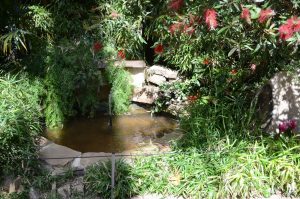

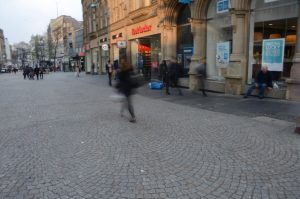
Instagram Story – Healthy Living/Eating
Sheffield Music Scene
Many successful and well-known artists have come out of Sheffield, such as Arctic Monkeys, Def Leppard, Joe Cocker, Pulp, and The Human League. This is reflected within the city centre of Sheffield with the up and coming music scene being very prominent through the iconic gig venues and nightclubs that the city has to offer, as well as the multiple music festivals that take place each year, such as Tramlines, MosFest, OakFest, and more.
Sheffield’s most famous and prestigious gig venue, The Leadmill, has seen bands such as Oasis, The Stone Roses, Kasabian, and The Strokes on their stage. The club opened in 1980, and has won many awards for both the venue itself as well as their club nights, from establishments such as NME and Live UK. As well as this, it is very respected by artists, as Franz Ferdinand once told the band Arcade Fire that playing the Leadmill is a “rite of passage”, and saying bands would rather play in The Leadmill than do the bigger Sheffield venues that they could have been selling out with ease.
The Leadmill also further gets involved with the music scene in Sheffield through the city’s famous Tramlines festival. Last year (2018), The Leadmill stage at Tramlines, located in the city’s Hillsborough Park, had headliners such as Tom Grennan, The Mystery Jets and Peace. Over the weekend, 30,000 people attended the main Tramlines event, as well as many more people who visit the free “Fringe” part of the festival. Tramlines ‘Fringe’ event is held in bars, pubs and clubs around the city, such venues voluntarily get involved and host many other artists so everyone can get involved.
Tramlines has grown over the years, it started out as a free festival that took over the city once a year, featuring predominantly unknown and up and coming artists playing in the city centre parks and pubs with a few music legends thrown in for good measure. However, over the last few years it has emerged into a respected and highly anticipated festival, becoming a lot bigger in terms of attendance and has relocated twice to larger open spaces only a short tram journey away from the centre. It has also drawn more established and well-known artists headlining, such as Two Door Cinema Club, The Courteeners and Nile Rodgers and Chic being this year’s headliners. Many up and coming bands from Sheffield also strive to be included in the line-up often starting out at the Fringe events, but ultimately aiming to be included in the main event at Hillsborough Park.
A lot of other festivals also take place in Sheffield, such as MosFest, an event that has recently moved from the quiet suburb of Mosborough to the larger capacity of Don Valley Bowl. This festival has had headliners such as The Farm, Lightning Seeds, The Pigeon Detectives, and a much-loved Sheffield band, Reverend and the Makers. The growth of this festival once again shows Sheffield’s music scene is still just as alive as it was when Pulp were headlining the Leadmill, and Arctic Monkeys were supporting Milburn, another local Sheffield band, around the country.
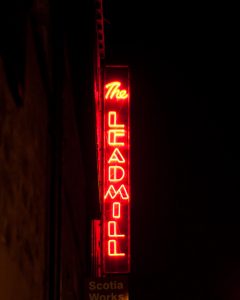
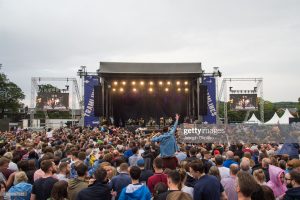
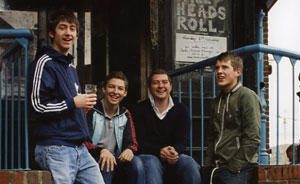
Podcast – Football & Social Media
The Social Media Generation
3 Minute Wonder